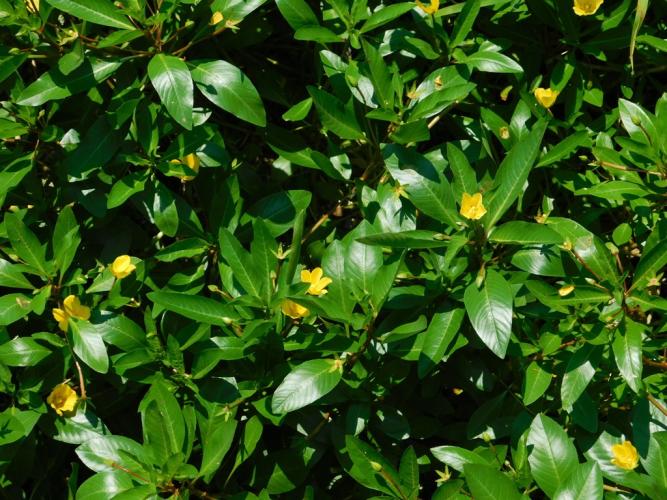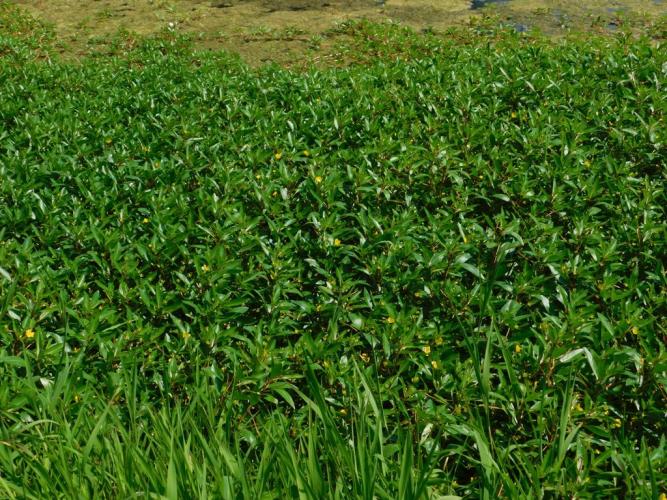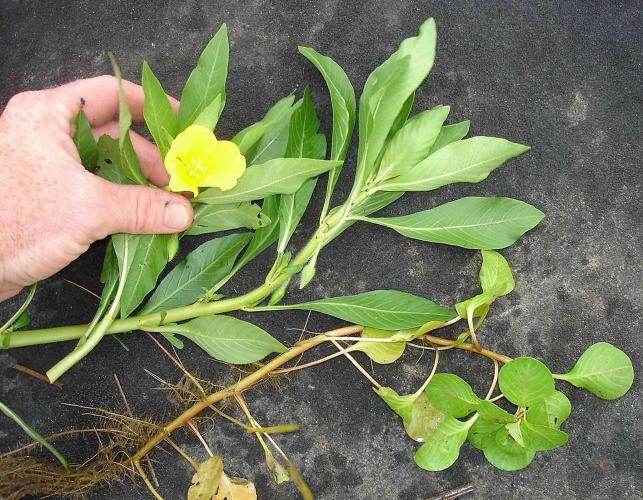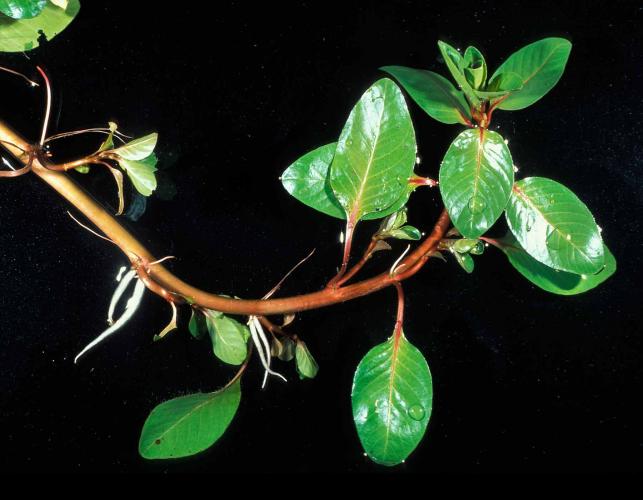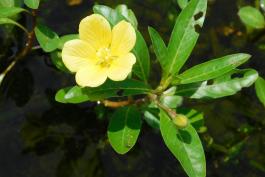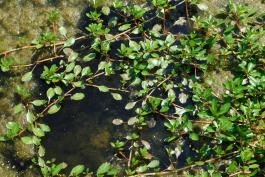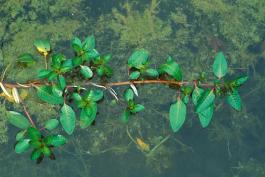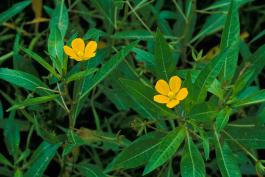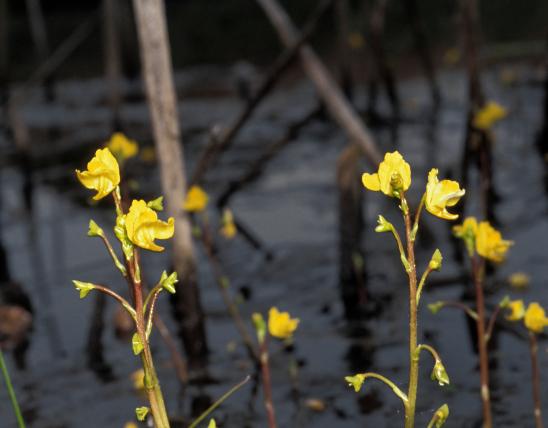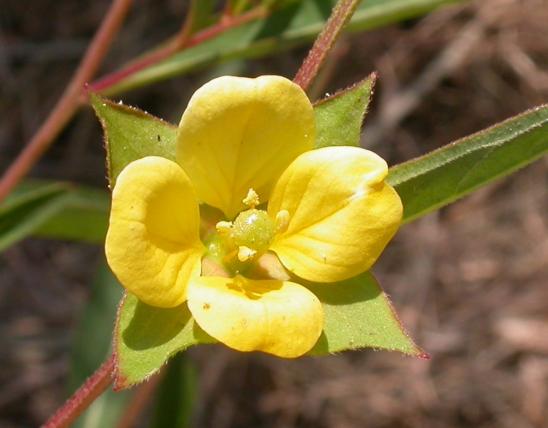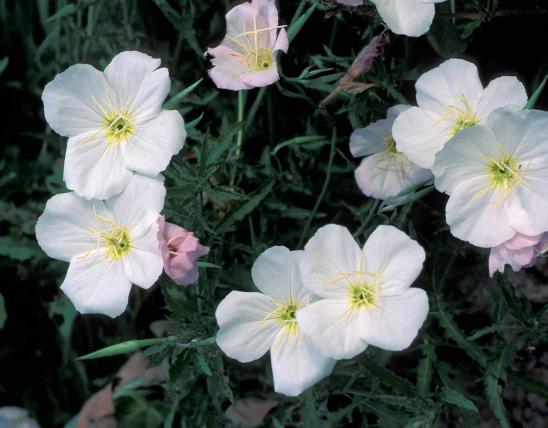
Water primrose is a common perennial shoreline plant with bright yellow flowers usually having 5 petals. Blooms May–October. The stems are long and trailing, creeping out across the water’s surface; they can reroot from cuttings. The leaves are shiny, dark green, alternate, variously shaped from oval to narrow and willowlike. The roots are of two types: typical roots that grow downward and take nutrients from the soil, and “air roots” or “breathing roots” that are white, spongy, grow upward, and float — these help the leaves and flowers stay above water as the plant spreads across the water's surface and also absorb oxygen from the air.
Similar species: There are 10 species of Ludwigia in Missouri, which all have 4 petals or, lacking petals, 4 sepals (not 5).
Stem length: 6 to 60 inches, rarely to 118 inches.
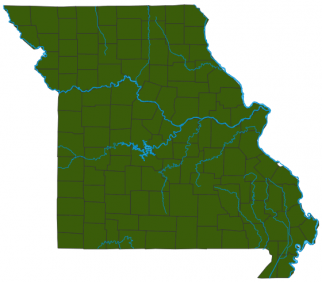
Statewide.
Habitat and Conservation
Grows in dense mats in the shallow areas of ponds, lakes, and streams. Occurs in slow-flowing portions of streams and rivers, ponds, lakes, sinkhole ponds, sloughs, oxbows, marshes, and swamps; also in ditches. Usually grows as an emergent to floating aquatic, with the basal portions rooted along the banks and the nonbasal portions of the stems often floating on the water.
Status
Native emergent to floating aquatic wildflower, common statewide.
Has a potential for explosive growth, so it can be a nuisance aquatic plant. It is not recommended for planting in ponds.
Control
Human Connections
When this species grows too rampantly in fishing ponds and waterways, it can become a nuisance and require control. In fishing ponds, the dense colonies of intertwining stems can make casting difficult. If water primrose appears in your pond, you should pull it out, ideally before the plants go to seed. Keep in mind that just about any fragment of stem left behind can grow into a new plant.
People have introduced this plant all over the world, where it can become a noxious weed. It reproduces easily and quickly from broken-off fragments of stem. In some parts of Europe, where it is not native, it is considered an invasive plant and has been banned.
This species can tolerate being submerged, so it is sometimes used as an aquarium plant.
Ecosystem Connections
Colonies of aquatic plants are important nurseries and habitat for fish, frogs, turtles, and other aquatic and semiaquatic life. They provide sustenance and shelter and for the small creatures at the base of aquatic food chains. Shoreline plants help stabilize banks against flooding and erosion; they also help cleanse water running off of the land.
As with many other wildflowers, water primrose's blossoms are visited by a wide variety of insects, including butterflies, skippers, beetles, flies, and more. Bees are its most effective pollinators. A variety of insects, including leaf and flea beetles, chew on the leaves, and true bugs may suck the sap.
Ducks eat the fruit capsules.


